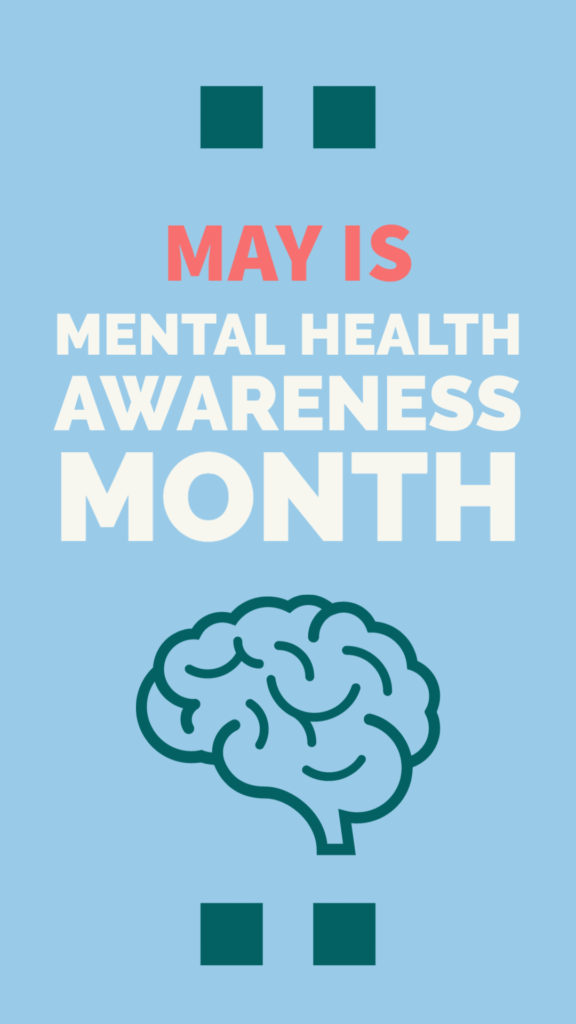
It is the last week of Mental Health Awareness Month in the United States. It seems to be a good time to take a look at how, in general, the mental health of the U.S. has fared over the last year. Perhaps we are more resilient than we thought…perhaps not. But tracking how we are doing is important to us all. These numbers will reassure us, or scare the heck out of us, depending on what they are. Let’s take a look at the findings of the CDC, one of our government’s watchdogs. Unfortunately, by the time statistics are gathered, processed, and reported time has passed and the situation “on the ground” has changed. This report covers information gathered from June 24 to 30 of 2020. Almost an entire year ago. Do they still mean anything? Can we draw useful trends and information for planning from something 11 months old? Yes, we probably can, as long as we look at current (April 2021 would be good) trends and factor them into our thinking.
The report indicates that adults in the U.S. reported their mental health was worse than it was last year, a fact that surprised no one. The numbers were worse for younger adults, minorities, essential works, and unpaid caregivers. They reported worse mental health outcomes, increased substance use, and elevated suicidal ideation (CDC, 2020). Again, nothing unexpected. Take a teen and take away all their friends, all their social circle, and all the spontaneous activity that takes place in school and it was likely that they would suffer higher rates of mental health issues.
Creating reports such as this one costs money, perhaps dollars that could have gone to treatment, to helping the homeless, to focusing more dollars to those who have been left out of the process until now. Many believe that the statistics in this report should have been foreseen without expensive polling and exhaustive research. However, today’s climate of best-practice, statistically driven action requires the facts on paper before we can send the boots where they are needed the most. (Retrieved from https://www.cdc.gov/mmwr/volumes/69/wr/mm6932a1.htm on May 20, 2022.
That was a year ago. Where are we now? Are we seeing any let-up in the rate of increase as we assess the position of the mental health of Americans?
According to the National Institute of Mental Health one light in the tunnel is that the expected rise in suicide ideation did not manifest itself (Gordon, 2021). Gordon goes on to say:
The mental health impacts of COVID-19 continue. From all that we know, it is clear these impacts will outlive the pandemic itself. Therefore, it is crucial that we work together to apply evidence-based strategies to support the mental health needs of all Americans and to make these strategies broadly available, especially in vulnerable communities.
Make sure that the vulnerable members of your client base are getting the help they need. Make a survey of what your area offers mental health patients that they can access on their own. Take heed of what the disabled population is suffering. While the majority of folks were in lock-down, deliveries, zoom meetings, visits to health care professionals via the internet, and other helpful services for those in lock-down soared. Let us make sure that we don’t let those much-needed services disappear now that the able-bodied population doesn’t have to rely on them.
Check into Maslow’s basic needs and make sure they are getting met. After all, a client suffering from a lack of food doesn’t have much energy left to seek care of their PTSD. If not, help your clients create a presence where they can get help, be it financial, social, or struggling with mental issues made worse by circumstances such as homelessness, chronic mental illness, or finding their next meal.
There is a plethora of new resources to strengthen the coaching alliance as you work with clients face-to-face or online. Check out your favorite resource catalog and see what’s new, or what has been around for a bit, but is new to your practice. Look for a new way to teach coping skills, reduce the stigma of mental illness, or to find peace with the loss of a loved one. Series such as will help you dig down to what the real problem is and how you can help the client not just survive, but soar.
